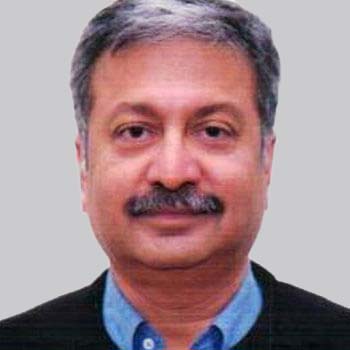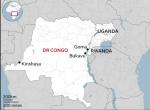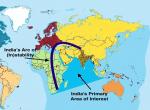The British consistently endeavoured to black out all news concerning the Indian National army (INA) throughout the period of its existence. As a consequence, very little was known of the INA in India. The British called it ‘JIFs’, the Japanese Inspired Forces. They made it appear that some prisoners of war had joined the Japanese to escape the rigour and toil. Subhas Bose was portrayed as a dissenting radical maverick, driven by personal ambitions. Not till the INA trials began that India got to know about INA. The impact was tremendous. Nothing ever like this had caught the imagination of people. It was perhaps the only time that the sympathy for INA engendered a feeling of ‘oneness’ amongst Indians.
The British had depended on the armed forces to subjugate India. Despite ascribing dubious motives to those who joined the INA, there was no doubting that the average ‘Jawan’ had done so for patriotic reasons. The British well knew that once this feeling seeped into the army, it would become impossible for them to hold on to India.
The INA was more of a propaganda stunt to the Japanese; a way to demoralize the British. They did not expect the INA to play such a big role as it finally did. It was inspite of the Japanese that the INA functioned and the Azad Hind Government formed; all entirely due to Subhas Bose.
Bose had hoped to capture Imphal. That would have given INA a large chunk of Indian soldiers. Their joining hands with INA would substantially increase their strength. Once this was achieved, fighting in India thereafter would create revolutionary conditions. When the fighting commenced, INA had only one division stationed on the Indian borders. Another was on the move to Burma. And the third division was in the process of formation. By the time Imphal was expected to fall, all three divisions were to be in Burma. Subhas was confident of raising three more divisions from the Indian troops that would fall to him after the capture of Imphal. With six divisions, INA would be the single largest force. The British would not match up to them. And the rapid advance in to India would create the right conditions for the Indian army to switch sides along with the people of the North-East.
But Bose had known that Japan was losing the war. Even then he strove to gain a foothold in India. It was really a question of ‘touch and go’. Twenty four hours had decided the fate then. If in those twenty four hours, the British garrison in Imphal had not been reinforced by a whole division, the INA would have been inside India. Subhas’ push needed to be backed by the Japanese air power to deny the British that much needed reinforcements. But the Japanese air support was missing. Till the last day in Imphal, the intelligence reports had indicated that the British Indian garrison was about to surrender to the INA. The last minute reinforcement saved the day for the British.
Subhas Bose arrived in Singapore on 2nd July, 1943. On 3rd July, a historic meeting took place at the Cathay Cinema Hall where Rash Behari Bose relinquished the position as President of the Independence League to Subhas. In his speech that day, Subhas mentioned about mobilizing the India’s women power. On 12th July, he sent for Lakshmi Sehgal in his office. In a three hour talk, the idea of Rani Jhansi Regiment was mooted. This regiment was to be a fighting unit. The main challenge was to recruit Indian women for the fighting services, to be trained just like infantry soldiers. This had never been contemplated in any phase of India’s freedom struggle. Psychologically, it was to have tremendous impact on Indian men, including soldiers.
The Rani Jhansi Regiment was started with 500 women volunteers in Singapore, from which 30 women were selected for officers training. Those who could not come up to the mark were put in to Nursing Corps. After completion of the course, the recruits were moved to Rangoon in Burma. Their number now stood at 1000. From Rangoon, the Regiment shifted to Maymyo, Subhas’ advance headquarters. The intention was to move further and get in to India. But unfortunately, while in Imphal, the reverses of INA started. Therefore, the Rani Jhansi Regiment also had to fall back. The Rani Jhansi Regiment was 1500 strong with 1000 in the fighting unit and the rest in nursing, cipher and wireless units.
The Rani Jhansi Regiment showed that the Indians living far away were not only willing to join the INA, but were also willing to let their women folk join the fight, knowing fully well how remote the chances were of their coming back alive. These volunteers had never been to India, neither had they known of the life back home. But they still enrolled, ready to sacrifice their lives. This was largely possible due to Subhas’ vision.
The provisional government of Azad Hind was formed on 21st October, 1943. There was a serious concern that the Azad Hind Government should not be seen as a quisling Government. The Government was also to have independent financial and other resources. Subhas went to great lengths to explain that the Japanese had nothing to do with the formation of this Government. There were people like Yellappa and Thivy who guaranteed that the government would be self-supporting. Indians in South-East Asia greatly contributed to support this government. Habib, a businessman from Rangoon, had donated his entire savings to the Azad Hind Government. Everyone contributed but the contribution from the poorer section was remarkable, for they literally gave away whatever little they had. The financing of Azad Hind Government was mainly through contributions. There was no tax or levy. Everything was on voluntary basis. Subhas successfully garnered the support of Indians settled in Southeast Asia. It was with their support that both, INA and Azad Hind Government were able to function.
The Azad Hind Government functioned from21st October, 1943 to 24th June, 1945, when Subhas finally left Rangoon for Thailand. One of the first acts of the Azad Hind Government was the declaration of war against Britain and America. The Azad Hind Government was the supreme body responsible for conducting war. The Government was also responsible for lives and property of Indians residing in South-East Asia. One of the main duties was to ensure that no Indian national was recruited by Japanese in their labour force.
Subhas Bose maintained that Congress leadership wanted freedom in their lifetime. He believed that no revolutionary leader had the right to expect that. A movement, a fight, had to be passed on. Expecting freedom in one’s lifetime was bound to lead to compromises. The enemy would always take advantage.
Subhas Bose was an exceptional leader of India’s freedom struggle who could actualize his vision in to action. Dr. Lakshmi Sehgal, a confidant of Bose, was convinced from his talks and actions that he, under no circumstances, would have accepted the partition of India.
(The paper is the author’s individual scholastic articulation. The author certifies that the article/paper is original in content, unpublished and it has not been submitted for publication/web upload elsewhere, and that the facts and figures quoted are duly referenced, as needed, and are believed to be correct). (The paper does not necessarily represent the organisational stance... More >>
Image Source: https://s01.sgp1.digitaloceanspaces.com/large/824753-47827-ndyxqptxak-1482300937.JPG










Post new comment